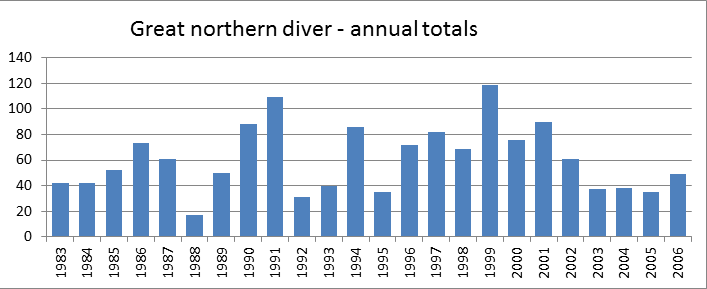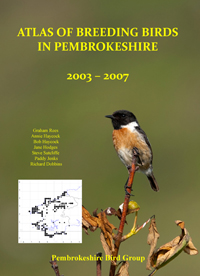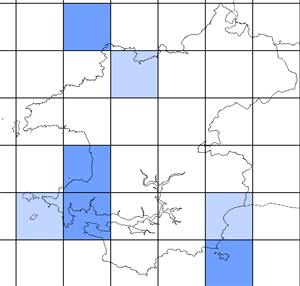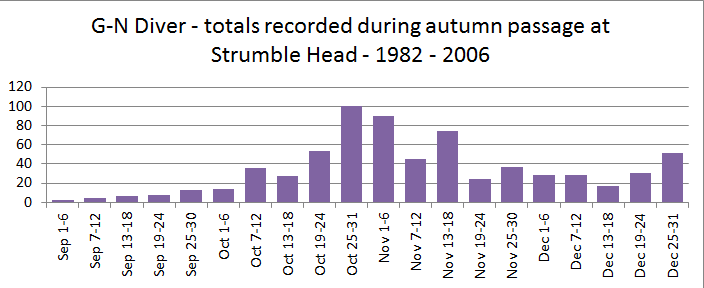Gavia immer
Winter visitor and passage migrant.
The Great Northern Diver breeds across the sub Arctic region of the Americas, Greenland and Iceland and on rare occasions has bred in Scotland and as far east as Svalbard. Those that winter in the east Atlantic do so as far south as the Bay of Biscay and Iberia.
As with many other species, it is difficult to assess the Great Northern’s status in Pembrokeshire in the past. The accounts of previous authorities have been largely anecdotal and prone to expressions like “sometimes numerous” and “frequently seen”.
Dickenson and Howells (1962) must have felt sufficiently able to interpret the past to state “From the numbers recorded in the last decade it is possible that a decrease has taken place since the 1930’s.” The decade they referred to was 1952 to 1961, when an average of three per annum was recorded, the maximum in any year being nine in 1959.
The average recorded per annum remained at three until 1982, the maximum in a year being six in 1972. By 1983 an increasing number of observers were putting the results of their observations into the communal record and from then until 2006 the average number recorded reached 61 per annum, with the most in a year being 119 in 1999:

There was a marked increase in the number of active observers during the 1980’s and 1990’s, they possessed ever improving optical aids and most had the discipline to contribute their observations to the communal record. These are likely to be the factors that explain the upsurge in records, rather than there being an increase in the number of Great Northern Divers visiting Pembrokeshire.
References
DICKENSON. H and HOWELLS. R. J. 1962. Divers in Wales, Nature in Wales 8.
DONOVAN. J and REES. G. 1994. Birds of Pembrokeshire, Dyfed Wildlife Trust.
LLOYD. B. 1929-1939 Diaries, National Museum of Wales.
LOCKLEY. R. M, INGRAM. C. S. and SALMON. H. M.1949. The birds of Pembrokeshire, West Wales Field Society.
MATHEW. M. 1894. The birds of Pembrokeshire and its islands, R. H. Porter.
 Wednesday, September 18, 2013 at 8:17AM
Wednesday, September 18, 2013 at 8:17AM 




